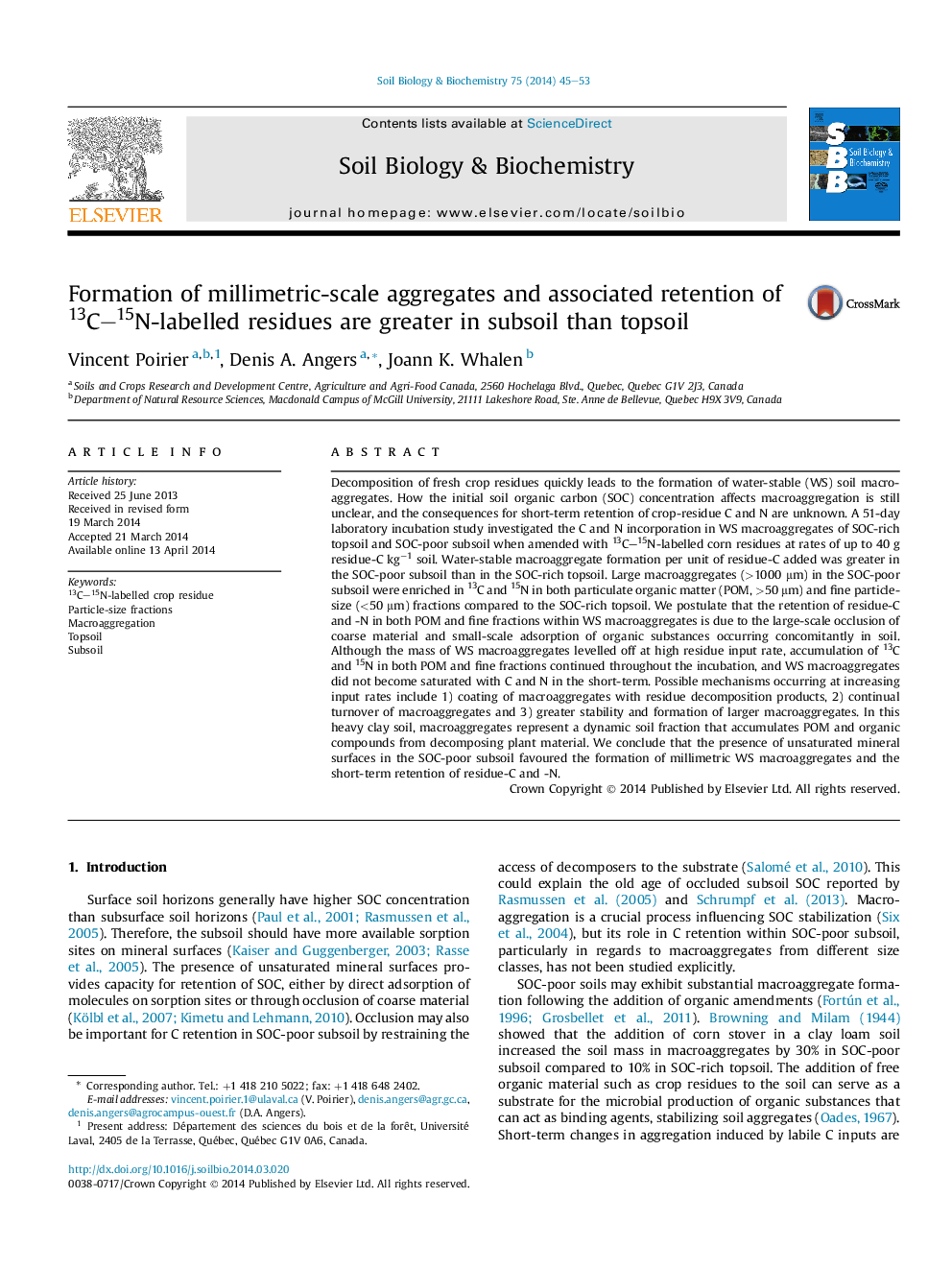| کد مقاله | کد نشریه | سال انتشار | مقاله انگلیسی | نسخه تمام متن |
|---|---|---|---|---|
| 8364674 | 1542609 | 2014 | 9 صفحه PDF | دانلود رایگان |
عنوان انگلیسی مقاله ISI
Formation of millimetric-scale aggregates and associated retention of 13C-15N-labelled residues are greater in subsoil than topsoil
دانلود مقاله + سفارش ترجمه
دانلود مقاله ISI انگلیسی
رایگان برای ایرانیان
موضوعات مرتبط
علوم زیستی و بیوفناوری
علوم کشاورزی و بیولوژیک
دانش خاک شناسی
پیش نمایش صفحه اول مقاله

چکیده انگلیسی
Decomposition of fresh crop residues quickly leads to the formation of water-stable (WS) soil macroaggregates. How the initial soil organic carbon (SOC) concentration affects macroaggregation is still unclear, and the consequences for short-term retention of crop-residue C and N are unknown. A 51-day laboratory incubation study investigated the C and N incorporation in WS macroaggregates of SOC-rich topsoil and SOC-poor subsoil when amended with 13C-15N-labelled corn residues at rates of up to 40 g residue-C kgâ1 soil. Water-stable macroaggregate formation per unit of residue-C added was greater in the SOC-poor subsoil than in the SOC-rich topsoil. Large macroaggregates (>1000 μm) in the SOC-poor subsoil were enriched in 13C and 15N in both particulate organic matter (POM, >50 μm) and fine particle-size (<50 μm) fractions compared to the SOC-rich topsoil. We postulate that the retention of residue-C and -N in both POM and fine fractions within WS macroaggregates is due to the large-scale occlusion of coarse material and small-scale adsorption of organic substances occurring concomitantly in soil. Although the mass of WS macroaggregates levelled off at high residue input rate, accumulation of 13C and 15N in both POM and fine fractions continued throughout the incubation, and WS macroaggregates did not become saturated with C and N in the short-term. Possible mechanisms occurring at increasing input rates include 1) coating of macroaggregates with residue decomposition products, 2) continual turnover of macroaggregates and 3) greater stability and formation of larger macroaggregates. In this heavy clay soil, macroaggregates represent a dynamic soil fraction that accumulates POM and organic compounds from decomposing plant material. We conclude that the presence of unsaturated mineral surfaces in the SOC-poor subsoil favoured the formation of millimetric WS macroaggregates and the short-term retention of residue-C and -N.
ناشر
Database: Elsevier - ScienceDirect (ساینس دایرکت)
Journal: Soil Biology and Biochemistry - Volume 75, August 2014, Pages 45-53
Journal: Soil Biology and Biochemistry - Volume 75, August 2014, Pages 45-53
نویسندگان
Vincent Poirier, Denis A. Angers, Joann K. Whalen,